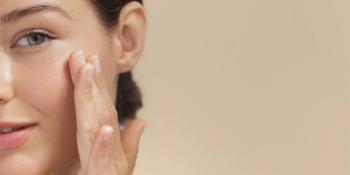
CPC Ingredients - A Sunbaked Situation
The idea seems simple. You slab a buffer onto your skin to protect it from a hazy enemy. The more you coat on, the more immune you are to the impending rays. Right?
Not quite. Since 1999, FDA (Rockville, MD) has been trying to get sunscreen manufacturers to stop using what it calls "unsupported, absolute, and/or misleading and confusing terms such as sunblock, waterproof, and others."
In terms of waterproof claims, FDA says that sunscreens are not actually infallible to water, and that words such as waterproof on sunscreen labels may mislead consumers into thinking that they are. (FDA points out that some sunscreen labels even provide conflicting information, with front labels that say "waterproof" and back labels that say "Rinse with water to remove.")
In addition, a sunscreen with a higher level of sun protection factor (SPF) may not really be that much more protective than a lower-SPF sunscreen. According to the American Academy of Dermatologists, an SPF of 15 blocks approximately 94% of the sun's UVB rays, while an SPF of 30 protects against approximately 97% of the sun's UVB rays and an SPF of 45 blocks about 98% of the sun's UVB rays. Subsequently, the benefits of higher-numbered, and therefore often more costly, sunscreens are not necessarily as high as consumers may think.
Last year, the Environmental Working Group (EWG) published a report on the effectiveness of sunscreens. It studied 952 common sunscreens and found that four out of five are not as effective as they promise to be. Additionally, the group stated that 53% of sunscreens make claims on their labels that are simply inaccurate (including using the terms that FDA deemed misleading).
Handy and Hot
In order to compete with UV filter–containing cosmetics and skin care products, sunscreens need to be convenient, multifunctional, and offer good protection against UV rays, according to research analyst Mintel.
One in ten new cosmetic and skin care launches in the last year contained sun-blocking ingredients, according to the market research company.
"Sunscreen faces tough competition from skin care and makeup enhanced with UV protection," says Taya Tomasello, analyst for Mintel Beauty Innovation.
Furthermore, in times when personal budgets are feeling the strain, multifunctional products, such as makeup that double as SPF protection, may win, she said.
Thus, she says, "Manufacturers need to show that their sunscreens provide the best UV protection, while being fun to use, convenient, and good for the skin."
Touting convenience will be one of the keys to success for new sunscreen launches, according to Mintel figures. For instance, nearly one in five sunscreen products launched in the past year came in an easy-application aerosol can.
In addition, a number of sun protection products were launched in powder form during the last year. These products promise to provide convenient and lightweight protection and include offerings from brands such as Bare Escentuals and Peter Thomas Roth.
"Let's face it. No one loved the texture and grease of older sunscreens, but people used them because they needed to protect their skin," Tomasello says.
Although it remains to be seen how new sunscreen product formats will fare against traditional sunscreens, sunscreen brands should keep innovating to remain competitive.
In more detail, the report claimed that three out of five sunscreens either don't protect the skin from sun damage or contain hazardous chemicals, or both. The group argues that FDA has not published "meaningful sunscreen standards," even though it says that FDA promised to do so back in 1978.
Misleading labeling is especially topical now, as more than one million new cases of skin cancer are diagnosed annually. This makes skin cancer the most common form of cancer in the United States. Even 90% of nonmelanoma cancers are still associated with sun exposure in some way. Treatment for nonmelanoma skin cancers cost the United States more than $1 billion in 2004 alone, according to the Skin Cancer Foundation.
FDA Strikes Back
The new FDA labeling mandate that was set to hit over-the-counter sunscreens by the fall aims to limit SPF values to 50+. FDA feels that capping the level of an SPF claim may help consumers realize the fact that higher-SPF sunscreens are not always that much better. The new FDA labeling rules also aim to make sure consumers know the difference between UVA and UVB rays.
For a long time, it was thought that the sun's UVB rays, responsible for most sunburns, was a main source of skin cancer. But science shows that UVA rays may be even more damaging.
Sunscreen manufacturers are owning up to this fact. The EWG reported in its study that the biggest improvement in sunscreens in 2008 is that 70% of sunscreens now contain strong UVA filters, compared with just 29% of sunscreens in 2007.
Dermatologist Monica Halem, PhD, an assistant professor at Columbia University, notes that there have never been clear guidelines on UVA conditions, and that FDA is right to finally step up oversight.
"UVA radiation is a longer wavelength that actually penetrates through windows and through the clouds," says Halem. "When you look at a bottle of sunscreen, what it says to you is that the SPF factor is only monitoring UVB radiation."
Tiny Drama?
Another problem facing sunscreen is naked to the human eye. In order to turn the normally opaque natural sunscreen ingredients titanium dioxide and zinc oxide into sheer coverage for your skin, they are sometimes engineered into tiny, nanosized particles.
These nanoparticles are so minuscule that some scientists fear they can penetrate skin, get into the bloodstream, and potentially damage your organs.
Nanotechnology affords the ability to manipulate minuscule materials into forms such as quantum dots, spherical buckyballs, and cylindrical carbon nanotubes. These engineered nanomaterials take on unusual properties: changing color, for example, or becoming electrically conductive or penetrating cell walls.
As serious as this sounds, some say that the concerns regarding nanoparticles remain theoretical. "It's never been proven that they do any actual harm to your body," says James M. Spencer, MD, associate professor of clinical dermatology at Mount Sinai School of Medicine in New York City.
Still, some dermatologists advise caution. "Why risk it?" says Adnan Nasir, MD, clinical assistant professor of dermatology at the University of North Carolina at Chapel Hill. "You don't actually need them to get adequate protection."
How best to avoid nanoparticles: "Stick to well-known sunscreen brands, which generally don't contain them," says Zoe Draelos, MD, a dermatologist in High Point, NC.
Newsletter
From ingredient science to consumer trends, get the intel you need to stay competitive in the nutrition space—subscribe now to Nutritional Outlook.





